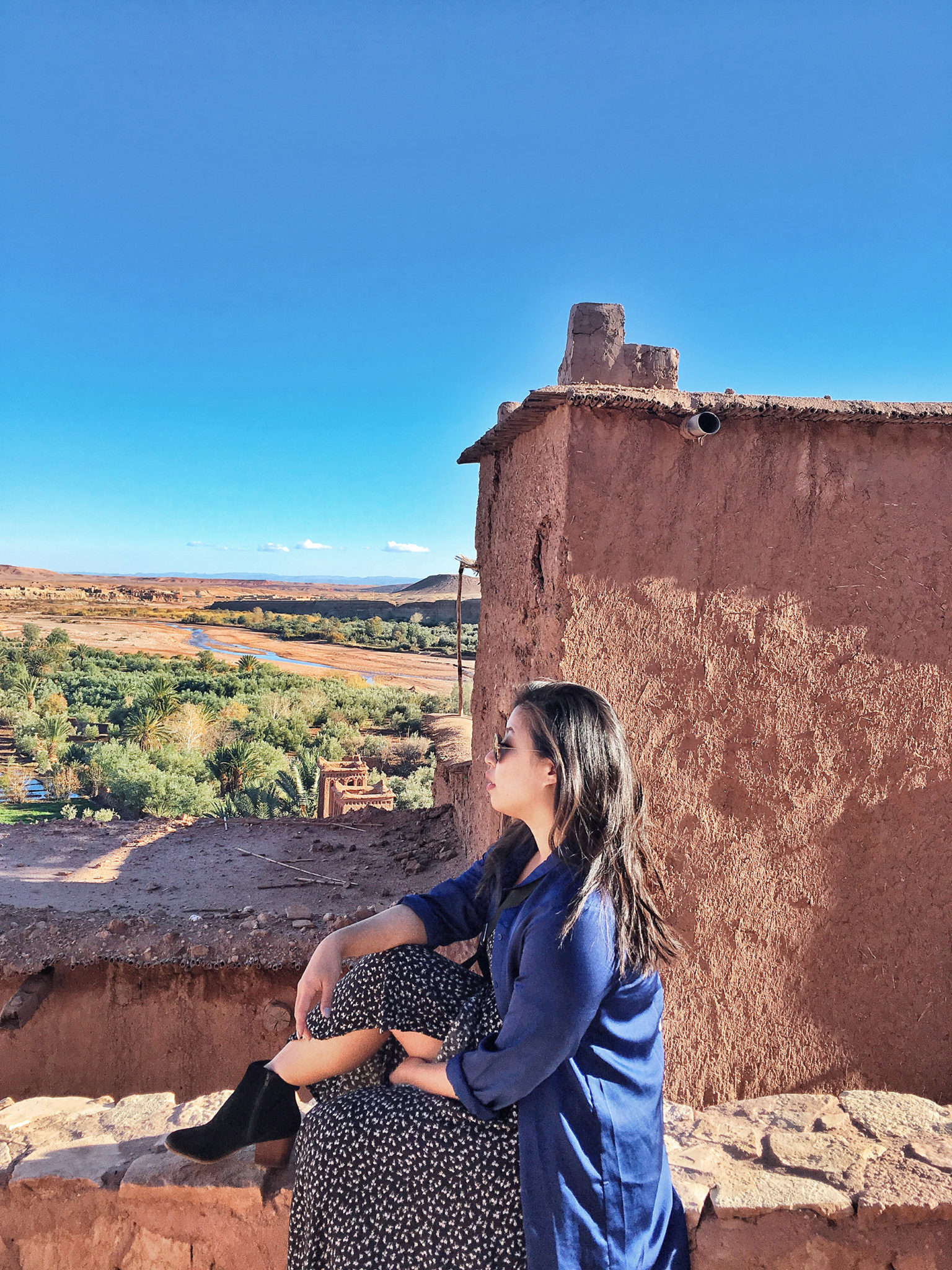
The day we visited Aït Benhaddou was bracingly crisp and the uninterrupted blue sky provided a striking contrast to the red, high-walled, structures of the village. Lush greenery lined the base of the worn, earthen buildings that seemed to almost pile on top of each other, towards the centre while the unified tone gave the illusion of one enormous and intimidating mass.
After a filling lunch of chicken tagine and inexplicably being dubbed “Fatima Couscous” by one of our servers (he barely spoke English so I couldn’t get an explanation…) our all-female crew of five trekked to the edge of the historic village where we were greeted by an older Matte Babel (one-time MuchMusic host) lookalike who would be our tour guide.
Just that morning we had departed from Marrakech to embark on a ten-hour journey to the Saharan Desert and we were at approximately the halfway mark and full of fizzy energy, restless to stretch our legs and explore the infamous UNESCO heritage site.
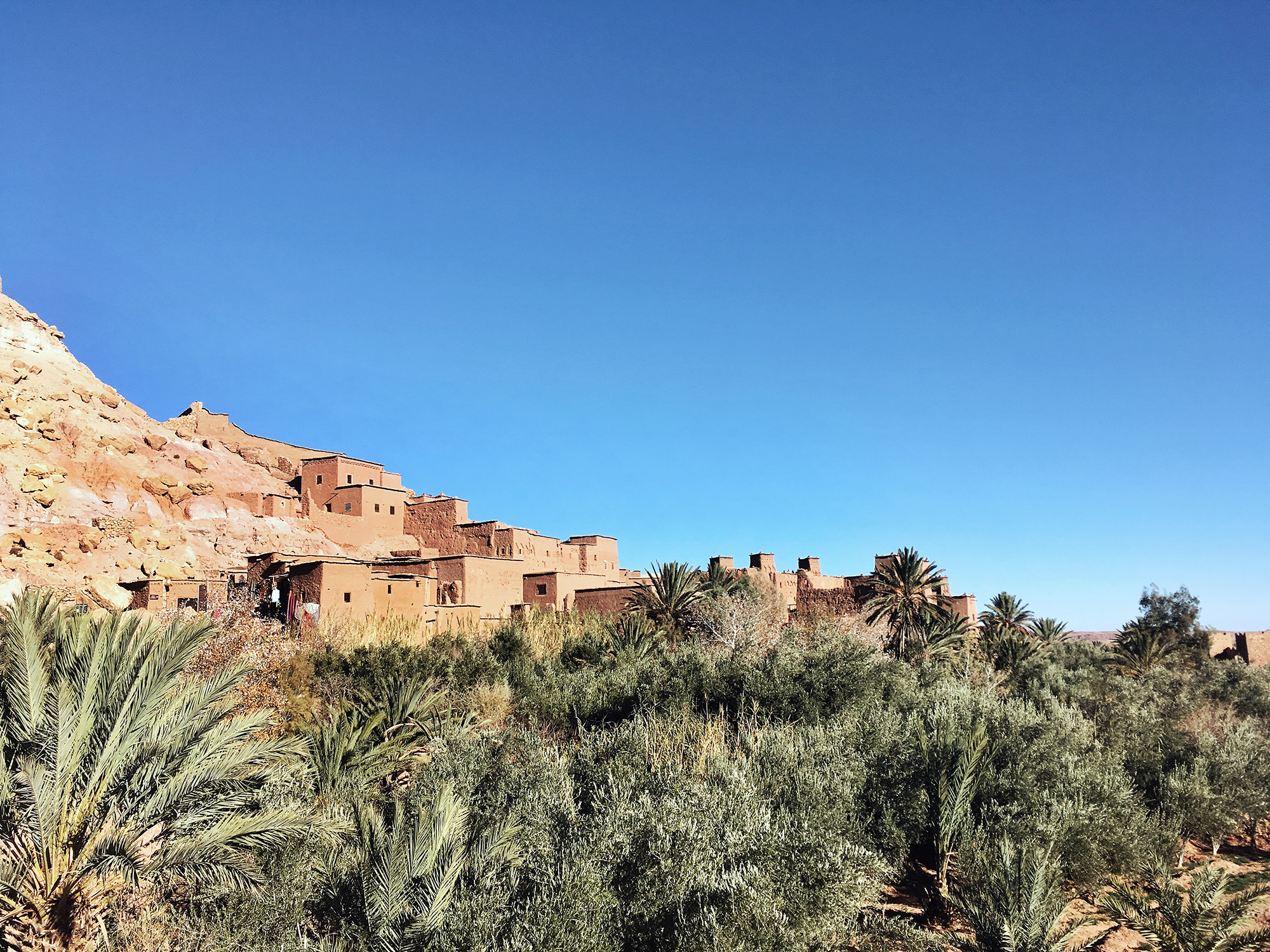
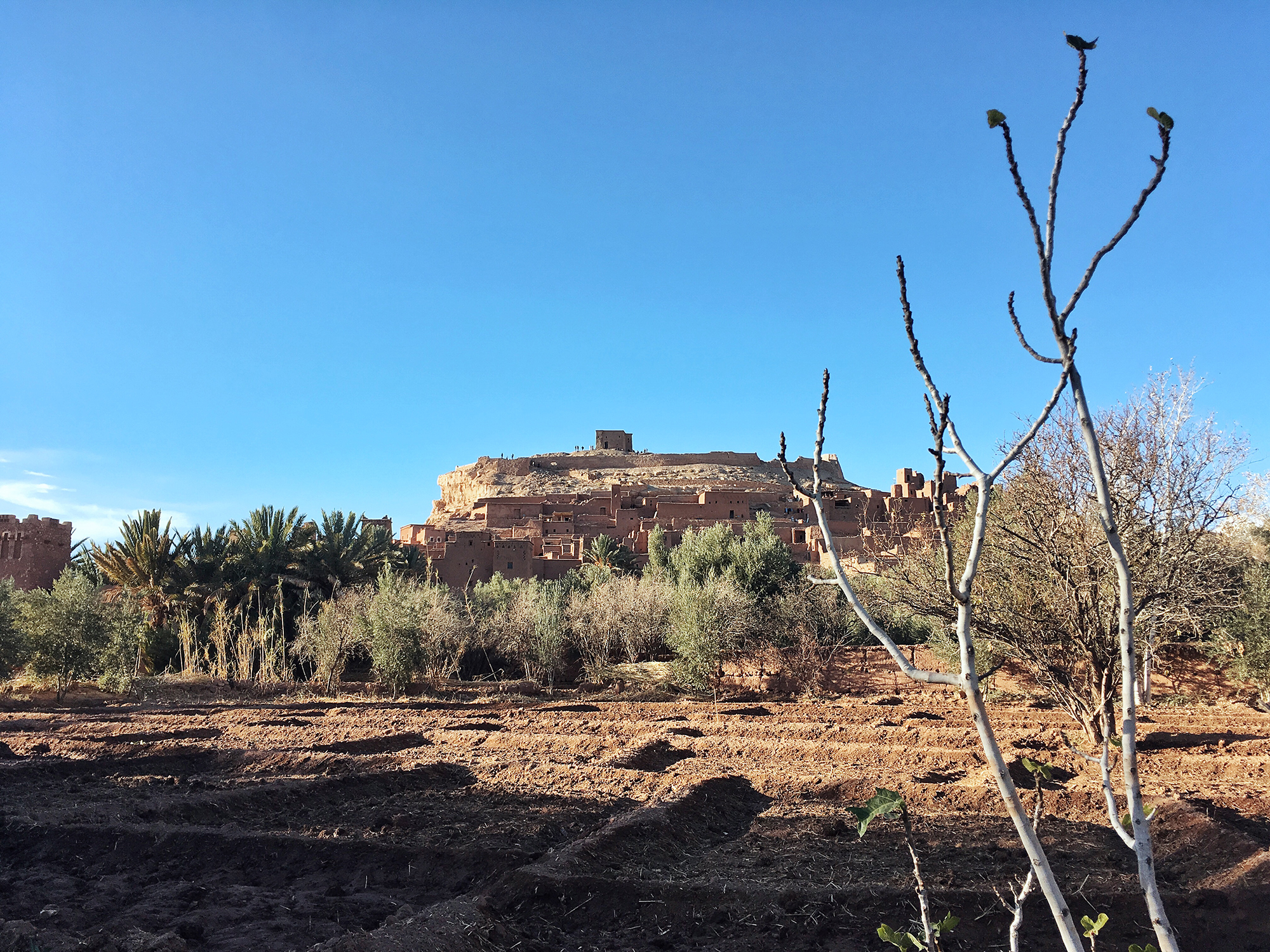
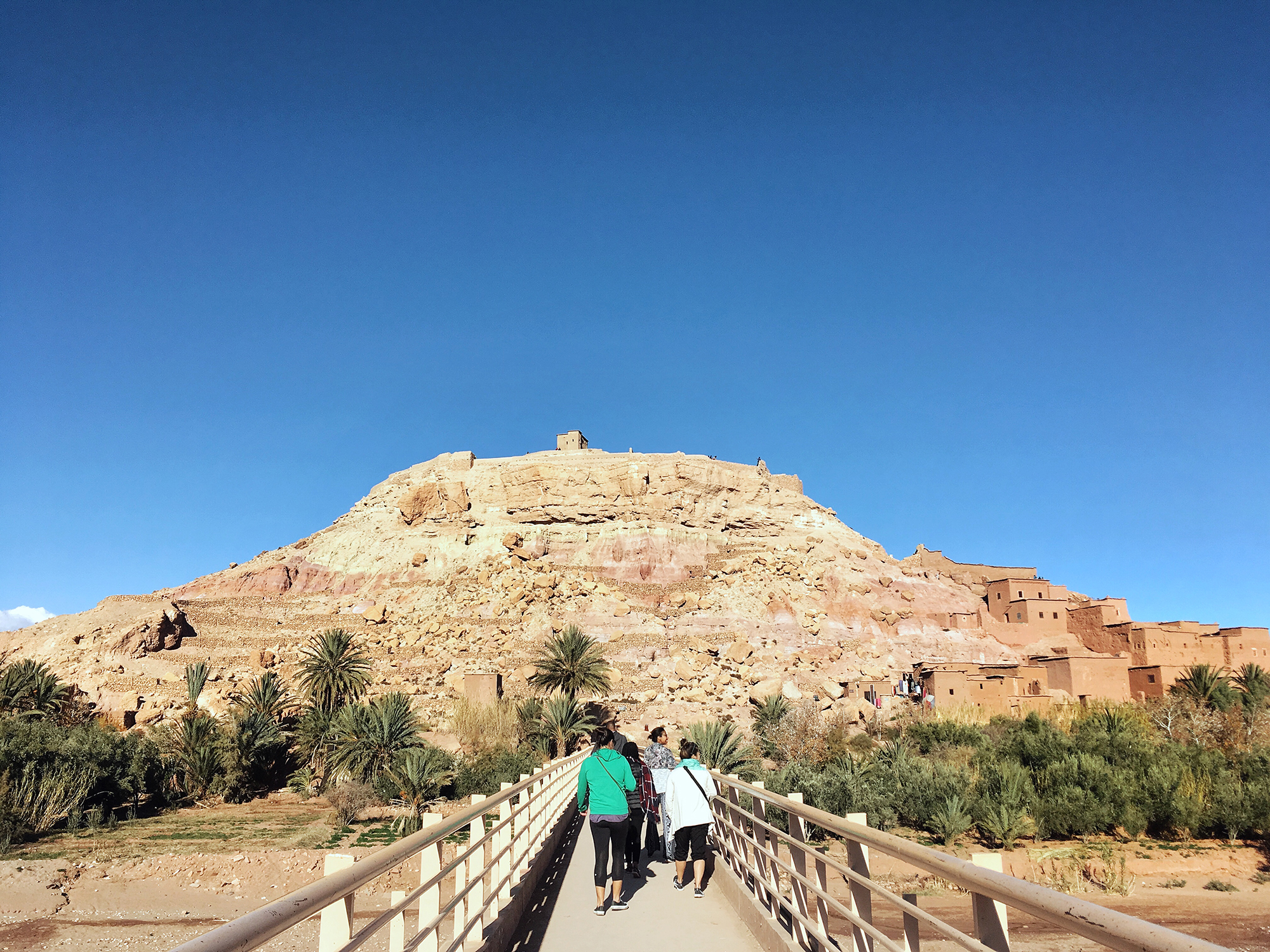
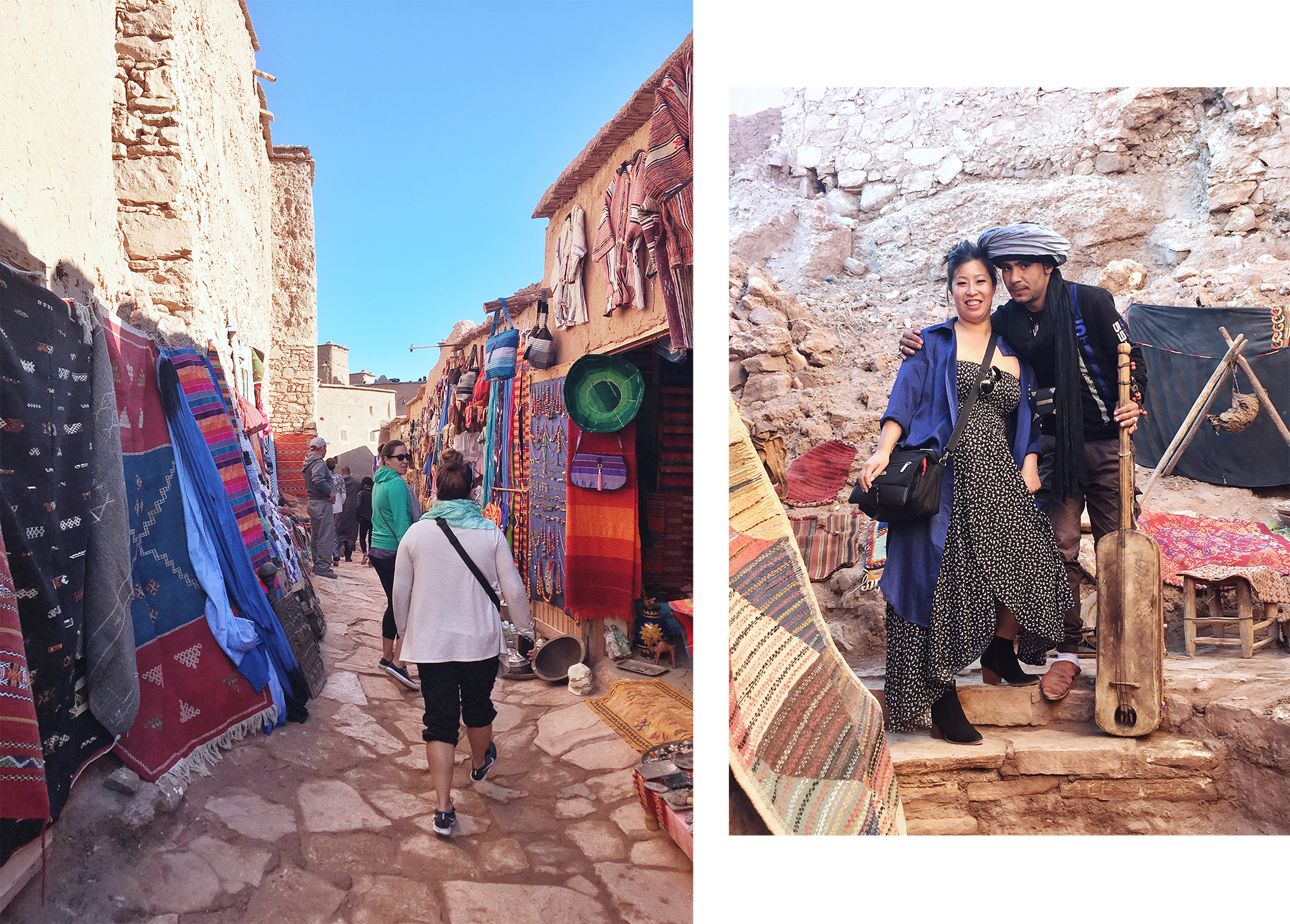
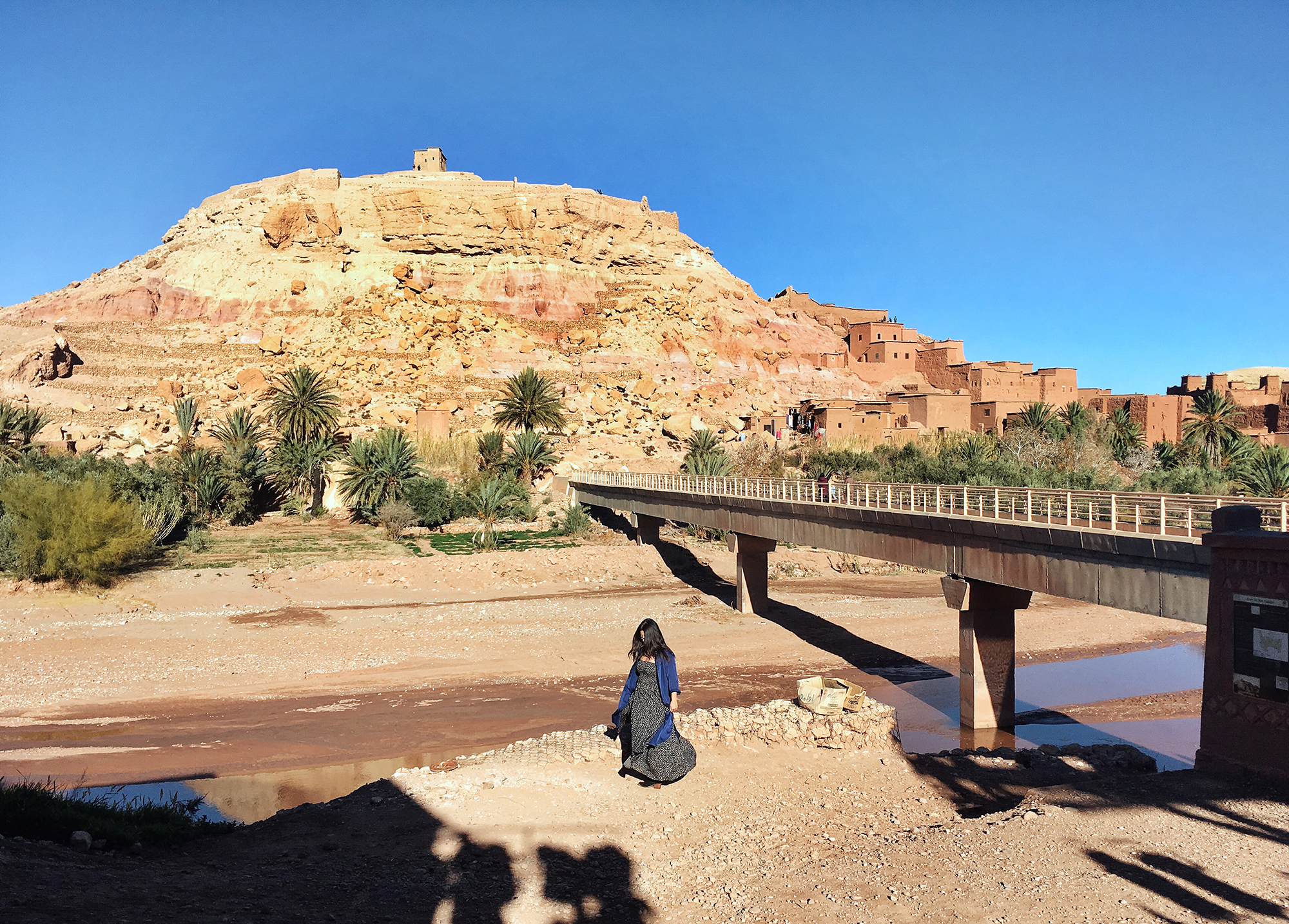
RELATED READING:
➳ Camel Rides and Luxury Glamping in the Sahara Desert
➳ What It’s Like To Spend The Night In A Legit Kasbah
➳ 7 Epic Stops Essential For An Authentic Moroccan Road Trip To The Saharan Desert
Despite almost getting lost in the maze of red mud brick buildings and garnering more offers of camels for my hand in marriage, the tour was enlightening and informative from the history of Aït Benhaddou to the Berber and Moroccan way of life on a whole.
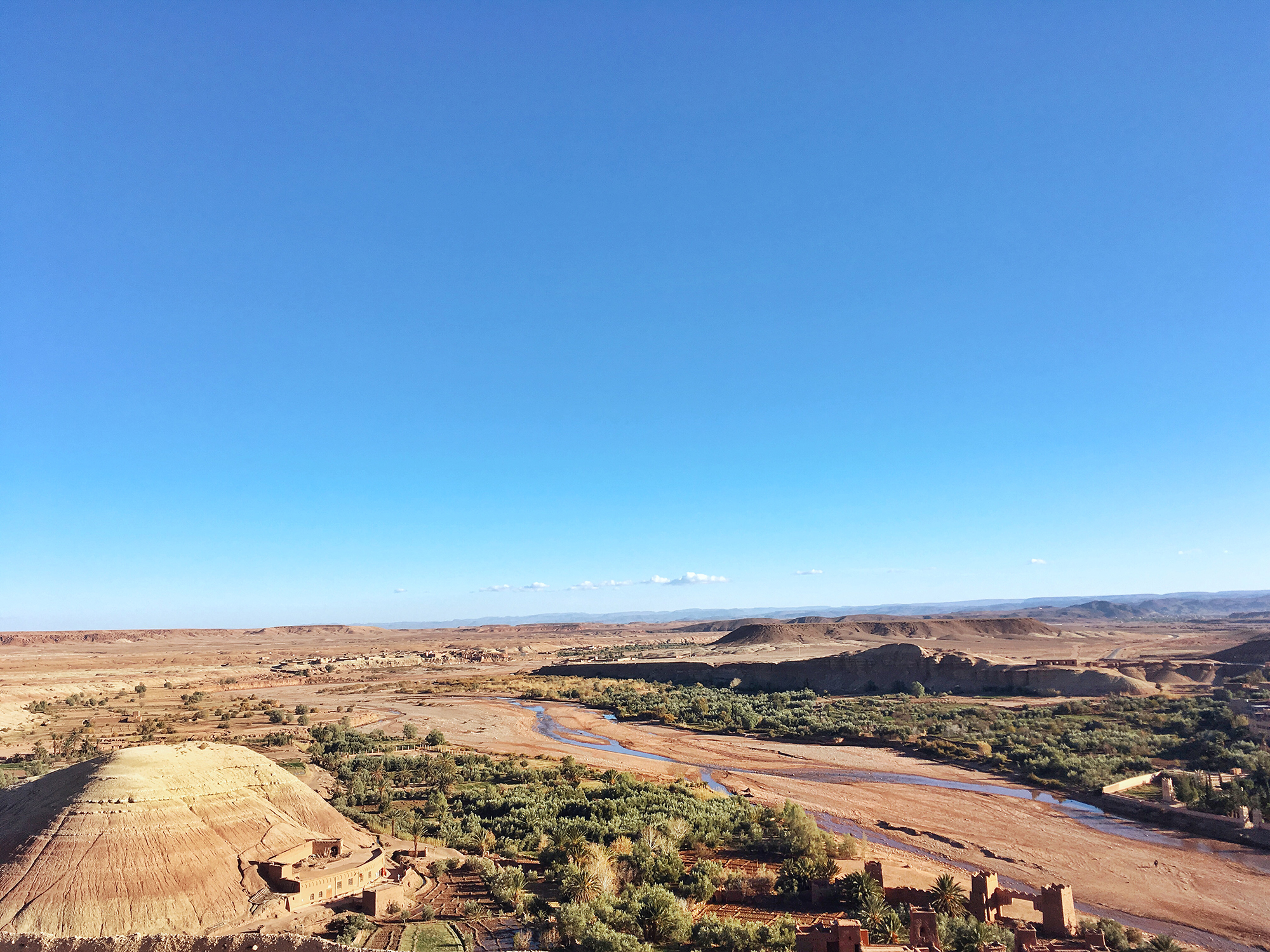
KSAR VS KASBAH
Situated in in Ouarzazate, Aït Benhaddou is often referenced as one of the most famous kasbahs when it’s more accurate to call it a ksar. A stop along a former trading caravan route between the Sahara and Marrakech, Aït Benhaddou is an ighrem, or in English, a fortified village, also known as a ksar in Arabic.
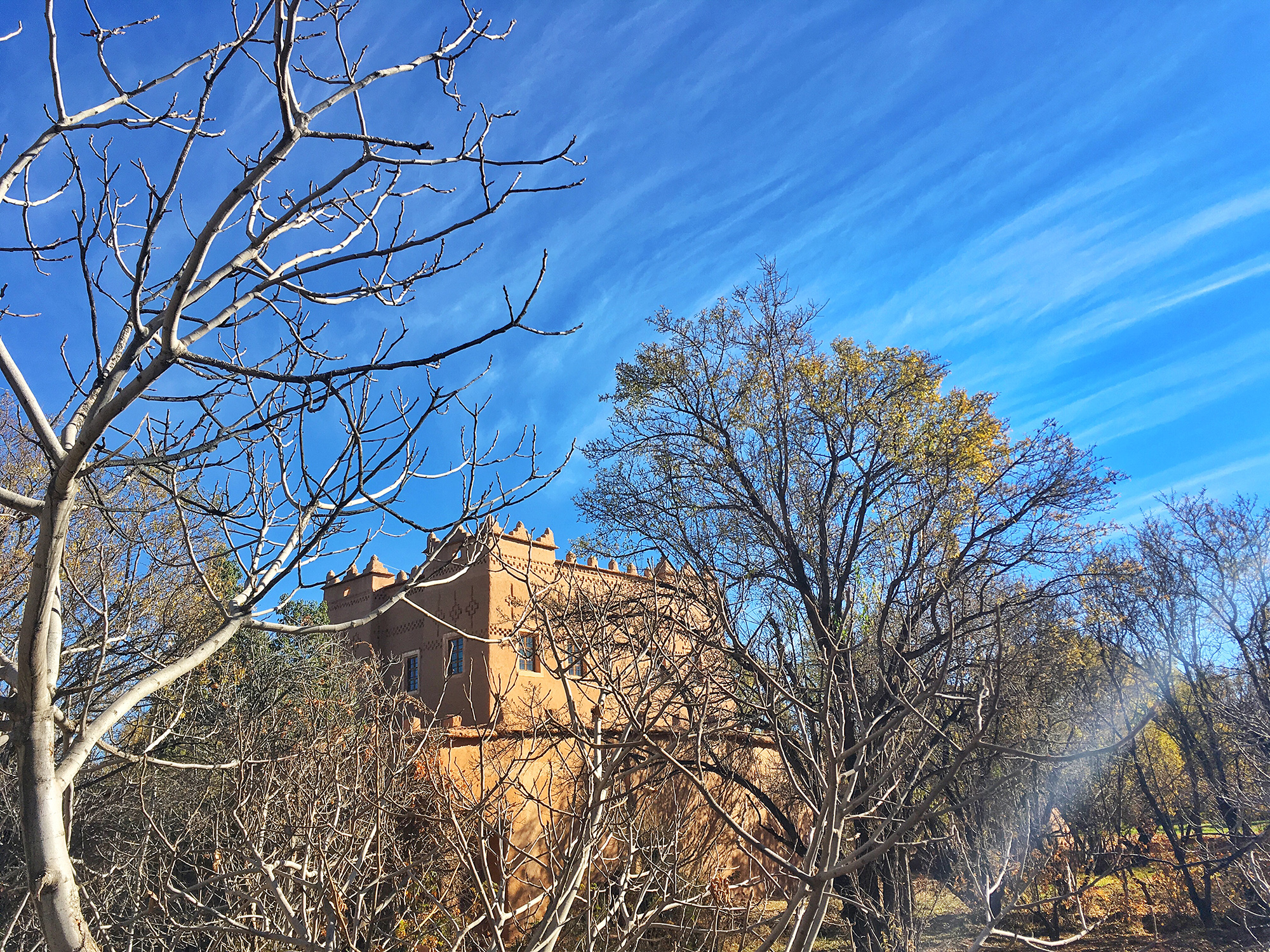
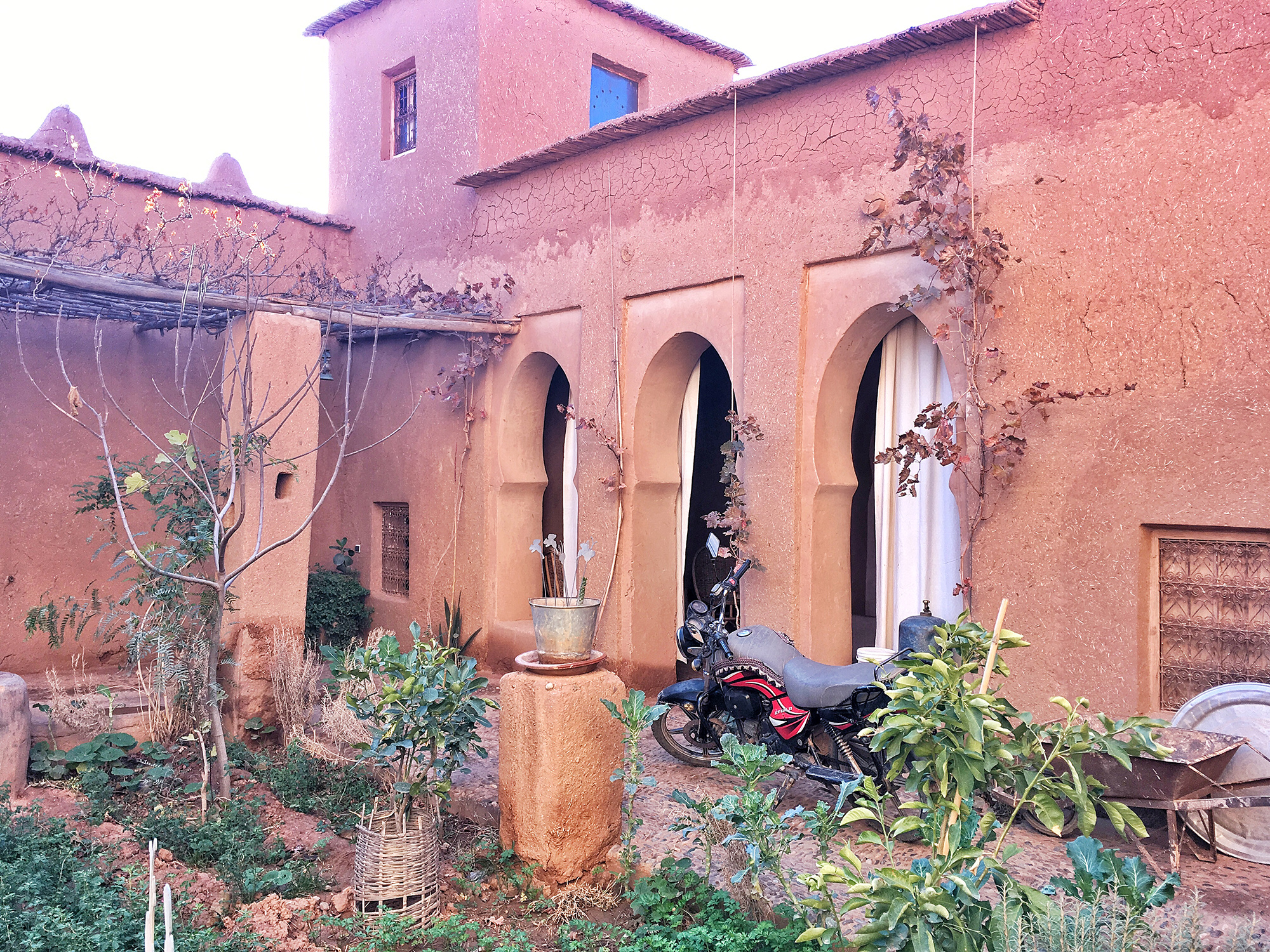
We actually spent the night rocking the kasbah of Ait Moussa and it was a singular (albeit impressive), standalone fortress. A ksar differs as it refers to a group of kasbahs built near to each other behind fortified walls that serve as defence against would-be enemies with communal areas like a market and a mosque.
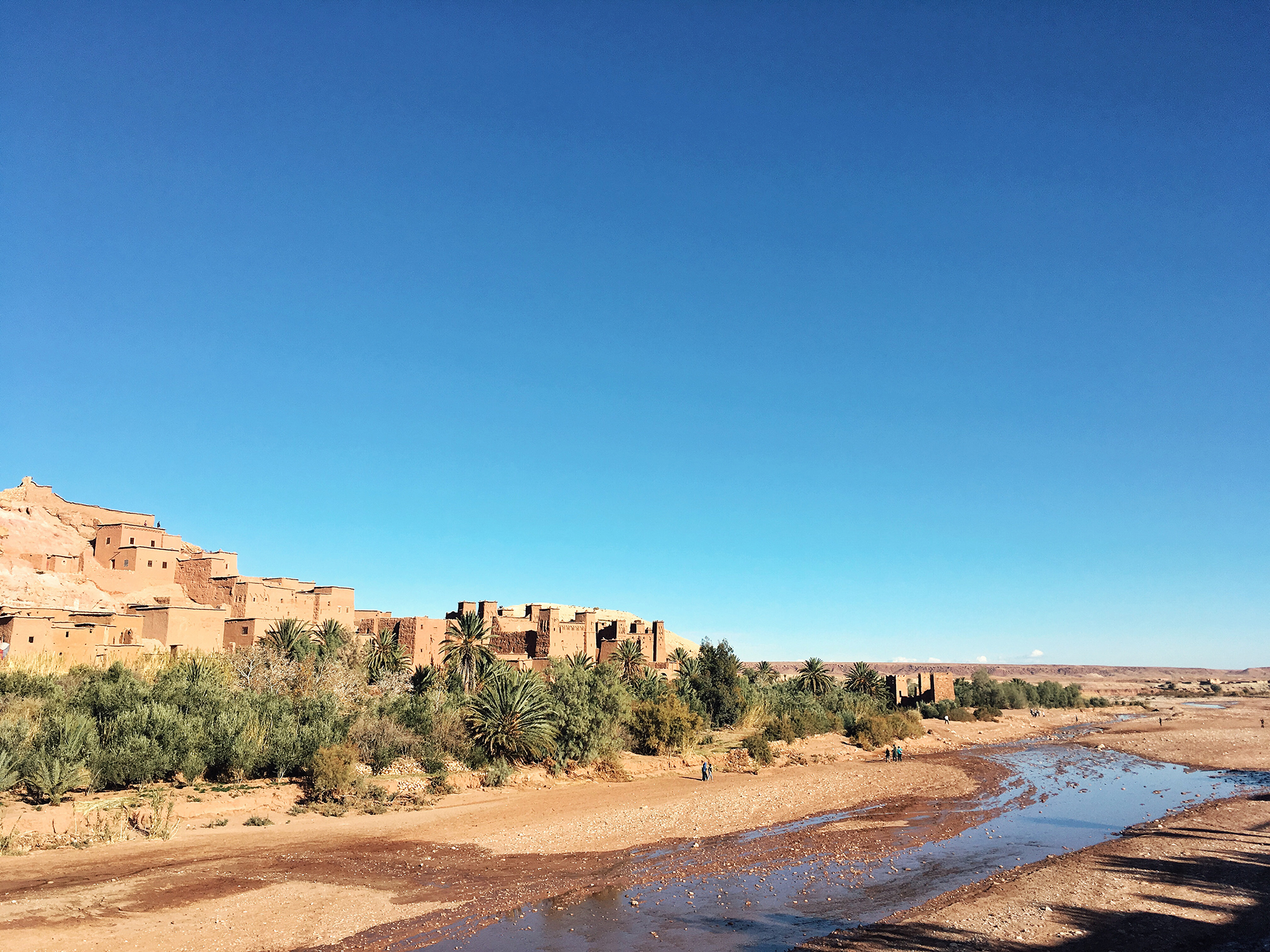
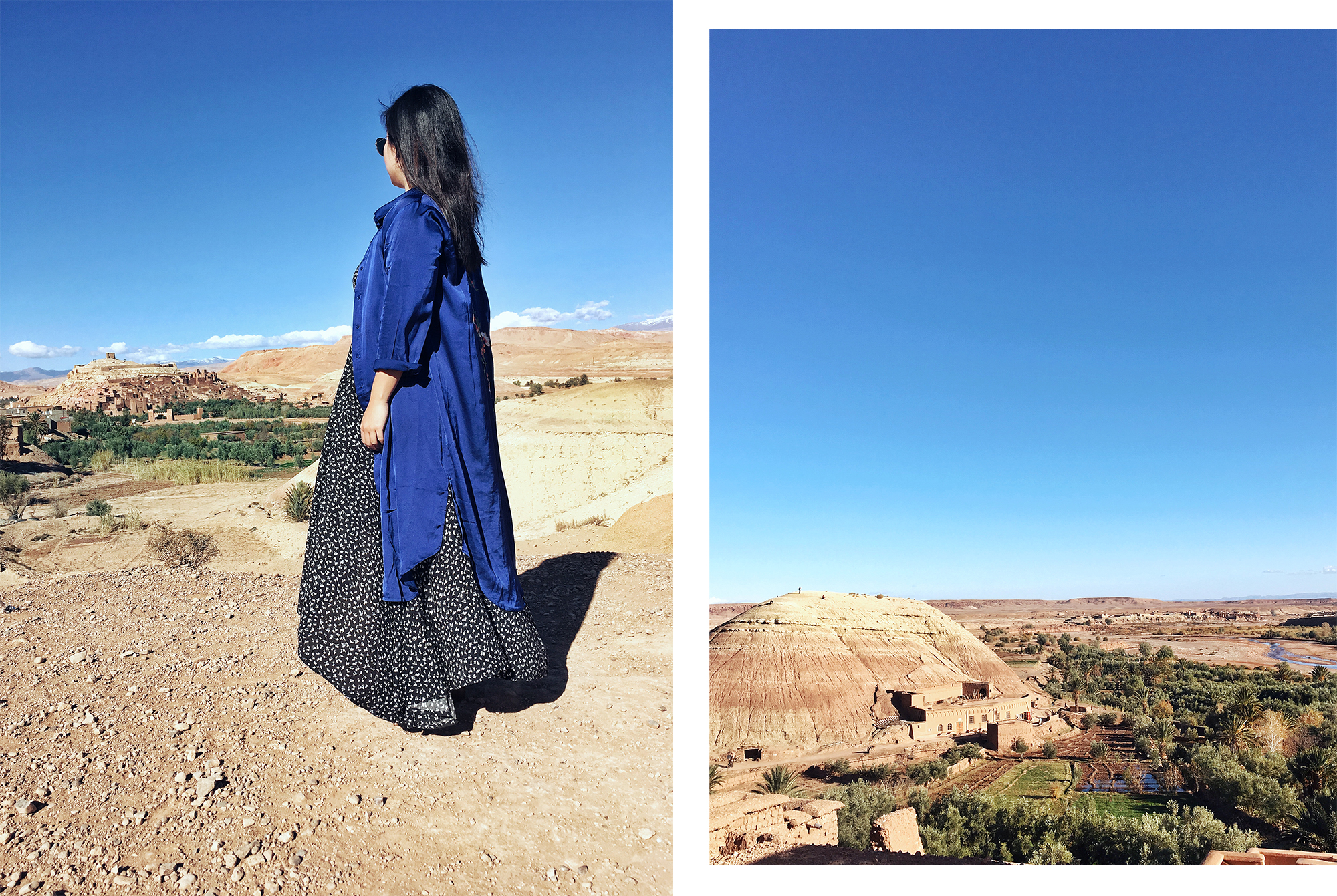
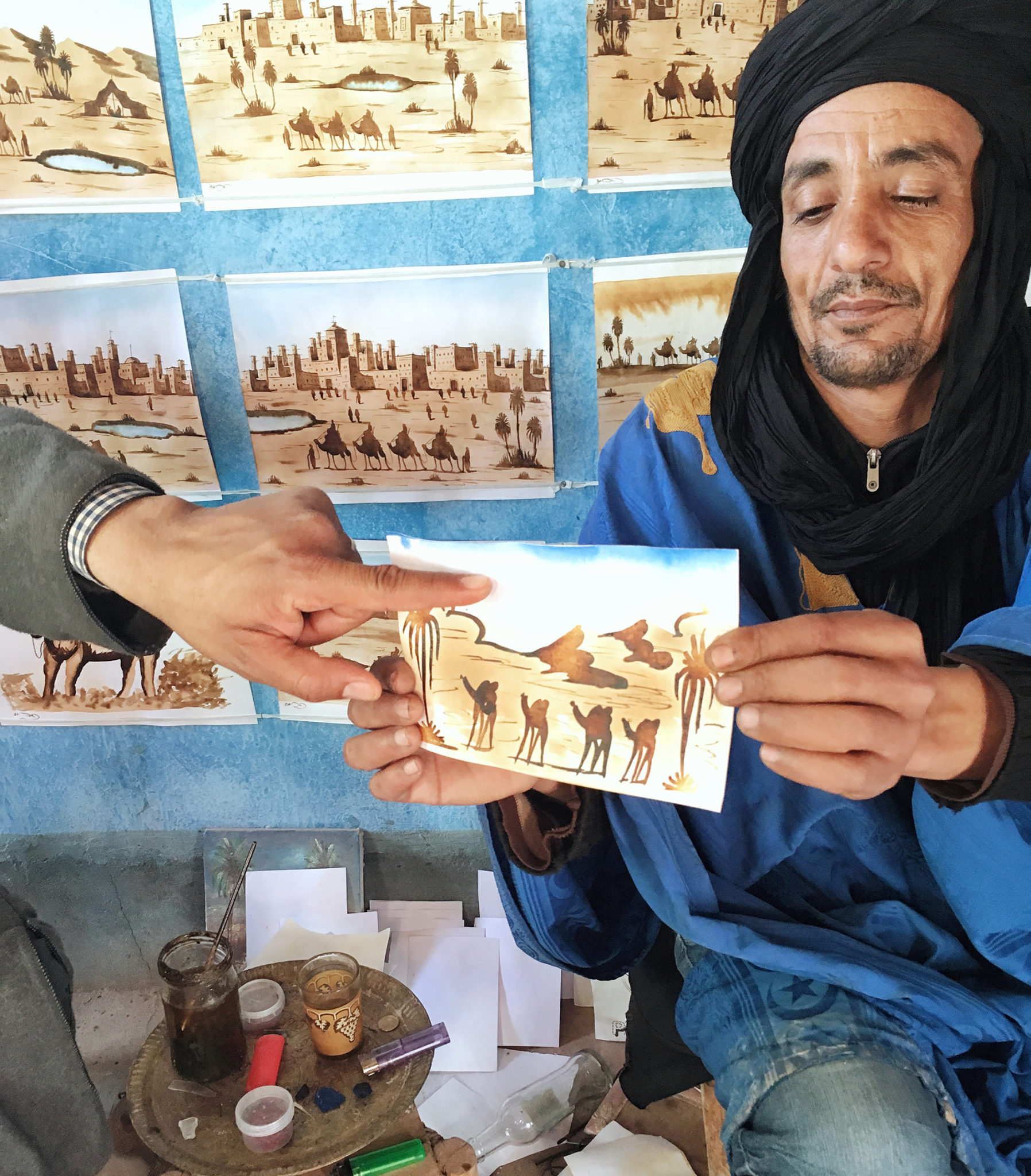
FIRE PAINTING
Ducking our heads to enter one of the many low-ceilinged structures revealed proudly displayed paintings by a local artist covered every square inch of wall space. In earthy saffron and brown tones with light washes of indigo, the art depicted the surrounding desert, kasbahs, and Berber people on camels.
Our host deftly painted over small sections of a piece with what looked like water then proceeded to work the back over a flame emitting from a small propane tank. We watched in awe as brown details emerged in the areas he just painted from the golden desert scene as if by magic! This local painting style is employed Berber artists in southern Morocco, are occasionally referred to as pyro aquarelles –fire and water.
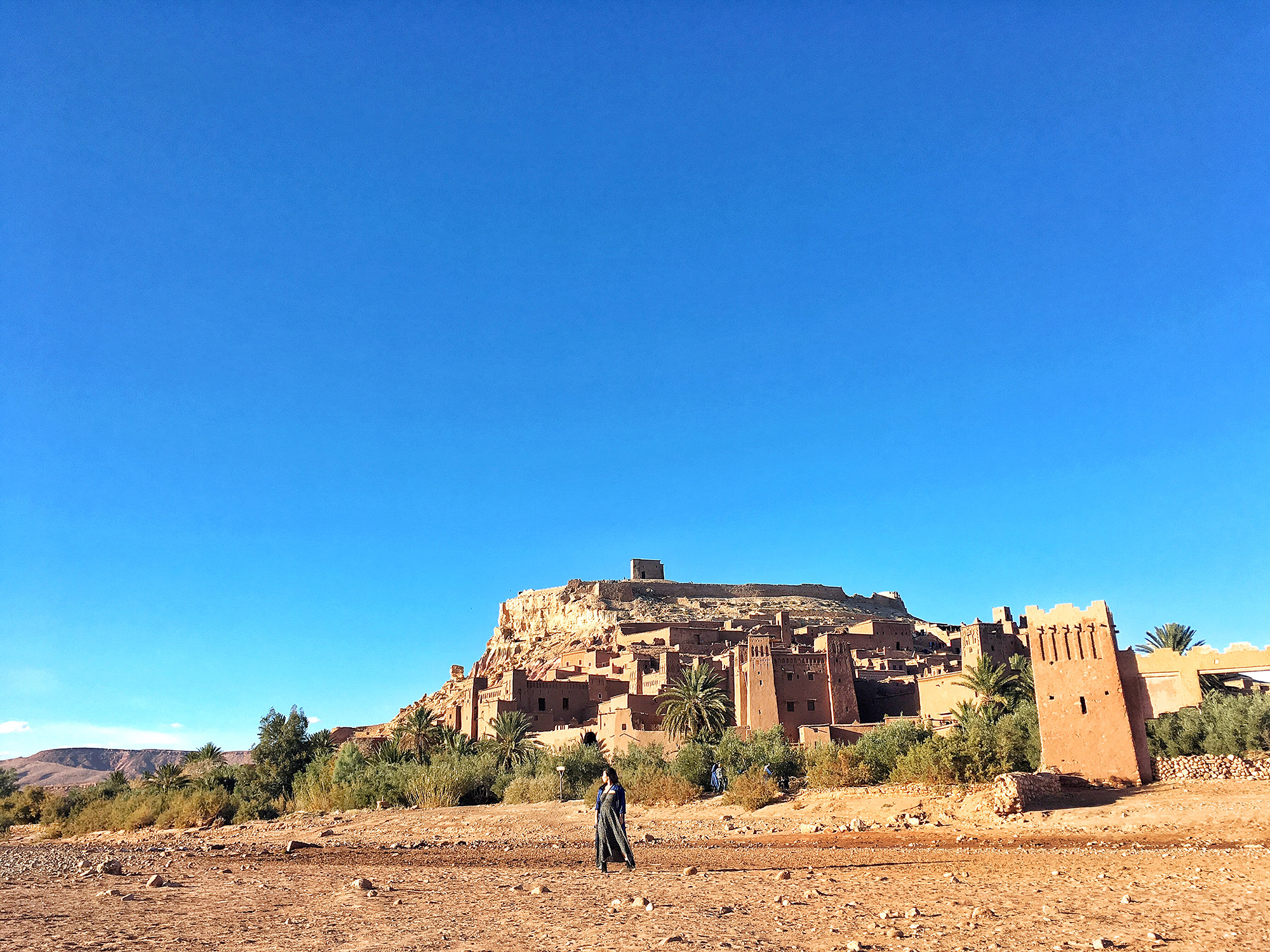
FILM LOCATION
Every since the classic Lawrence of Arabia was filmed at Aït Benhaddou, it’s been a recognizable backdrop of huge blockbuster films like Prince of Persia, Gladiator, The Mummy, and Kingdom of Heaven. If you’re a Game of Thrones junkie, this would be a notable spot to visit as it’s also the setting for Yunkai, the Yellow City.
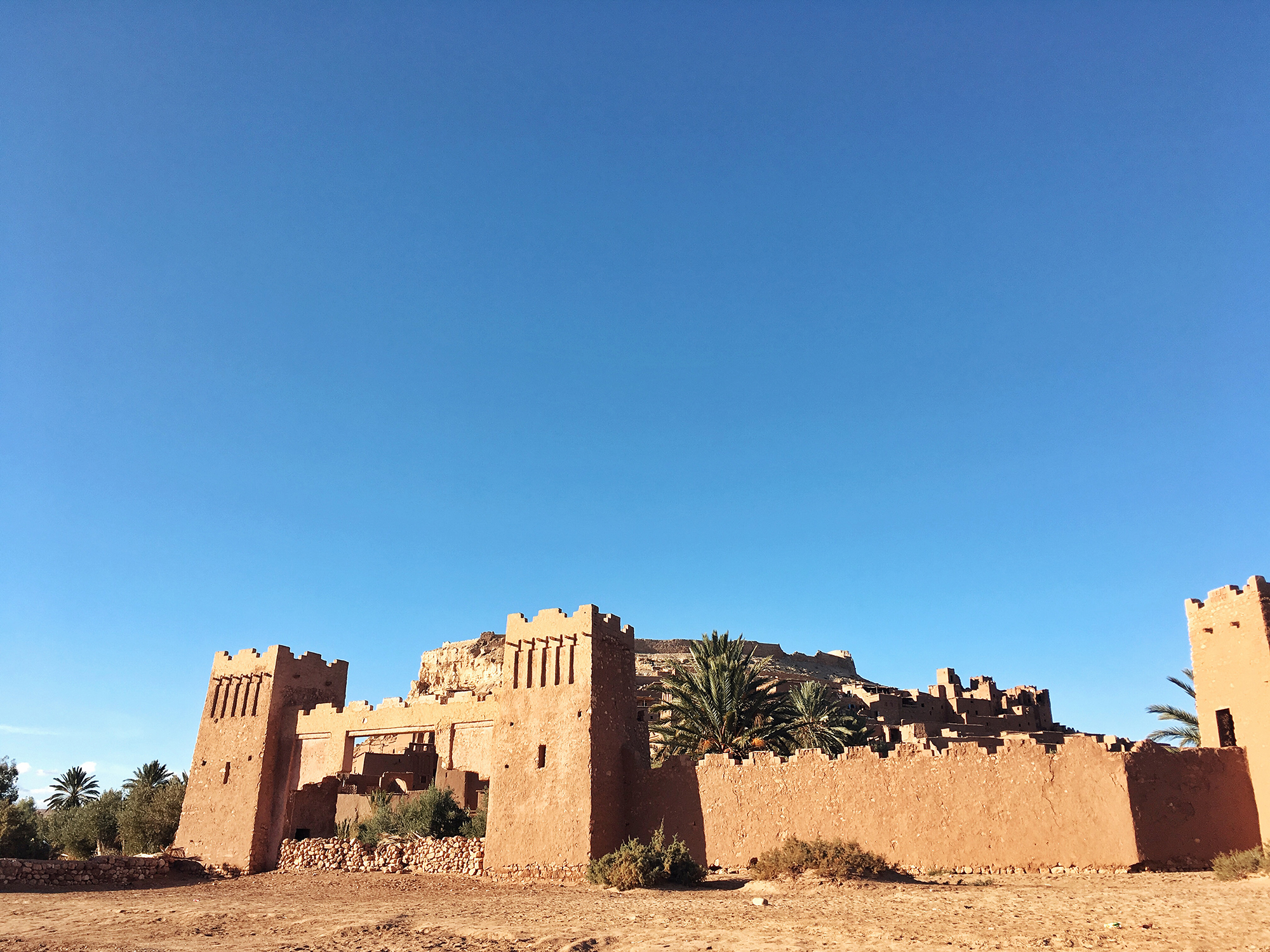
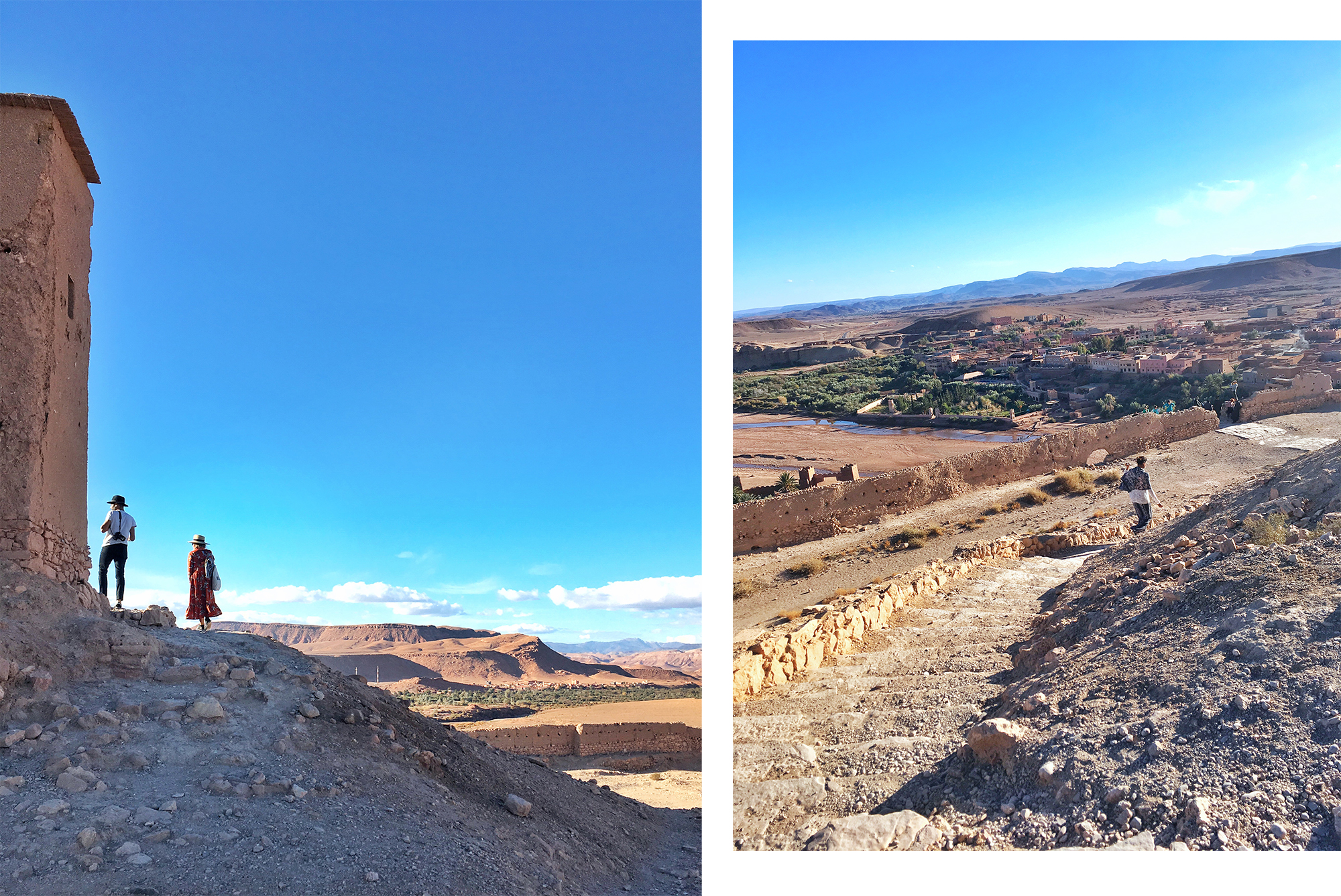
It’s often used for stories set in the Middle East not only for the country’s political stability and the architectural similarities of the fortification but it helps that Morocco is very hospitable to filmmakers, making it a relatively easy location to work in. To avoid destroying the original structures, sets were built to blend in then were left standing after the movie wrapped.
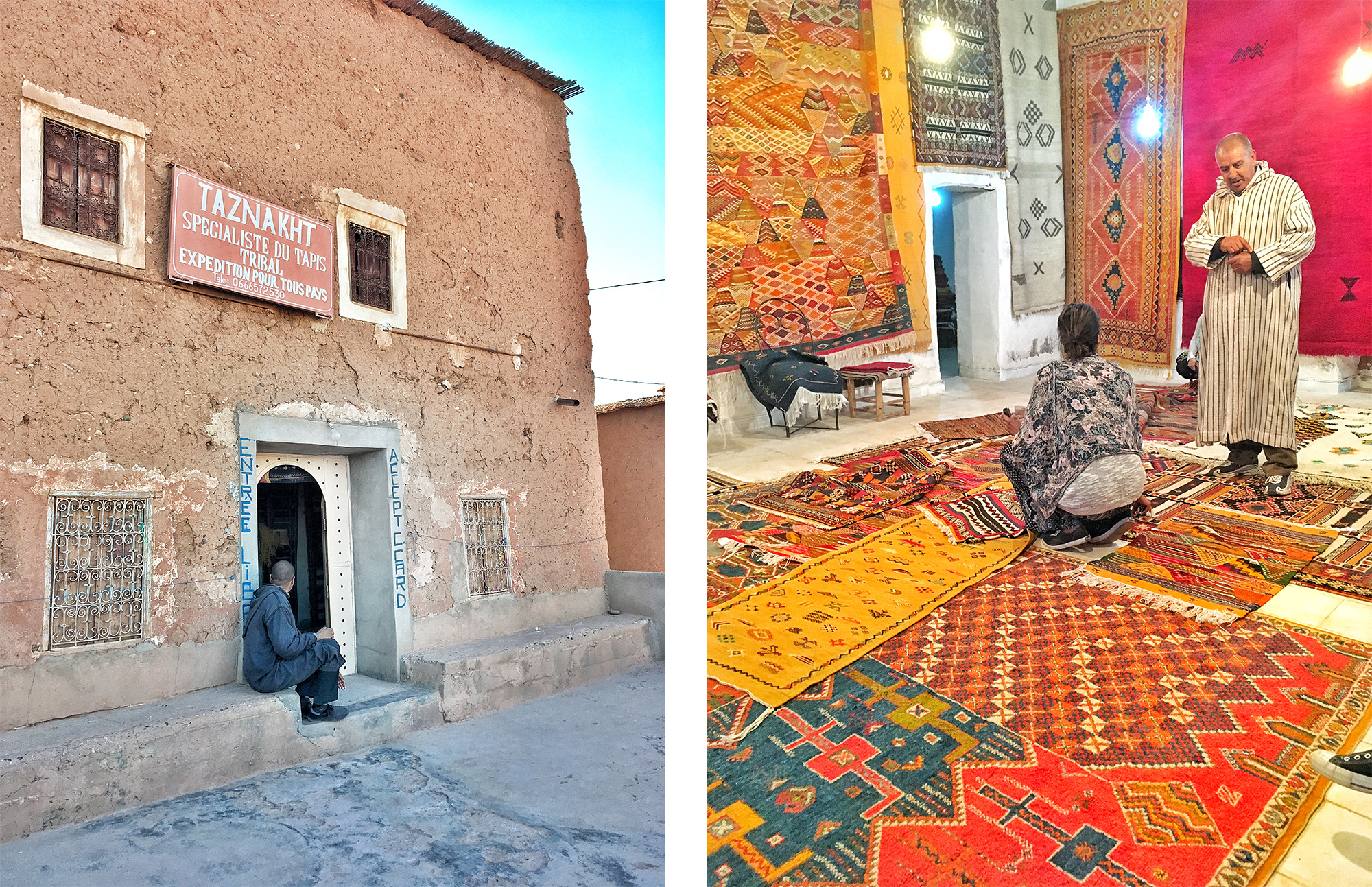
TAZNAKHT RUGS
We stopped by a stand-alone shop with every square inch of wall space dedicated to a vibrant display of woven masterpieces. The owner taught us all about the difference of style and material used in traditional Berber carpets according to tribe, season, etc… as local woman worked on one at an impressive loom.
The most interesting part was learning about the evocative symbolic language used in the pieces that had originated from songs and legends of different tribes from generations back.What I initially thought were abstract motifs actually denoted specific meanings. A diamond pattern is meant to ward off the evil eye while a snake symbolizes loyalty and a beetle represents hope.
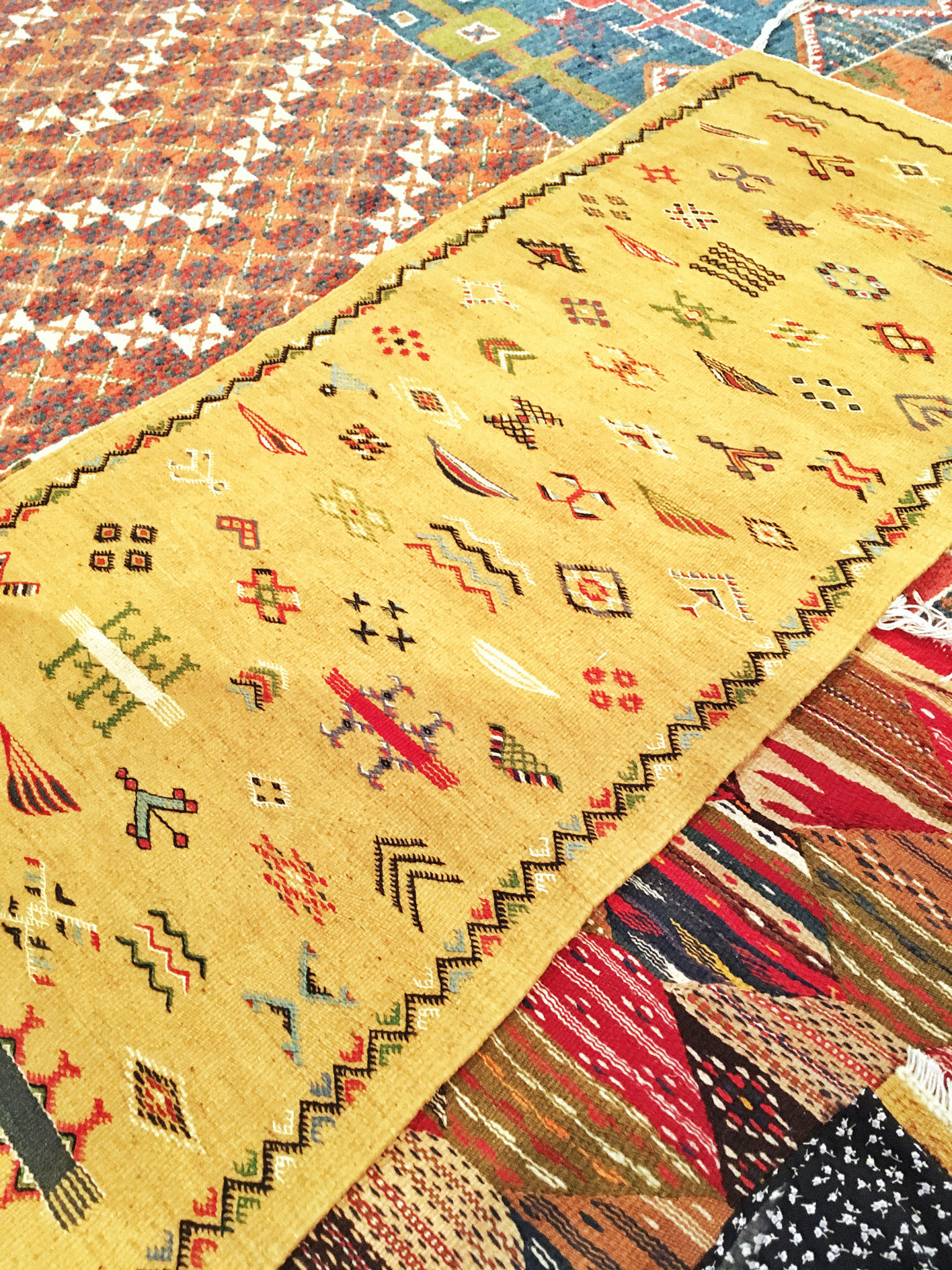
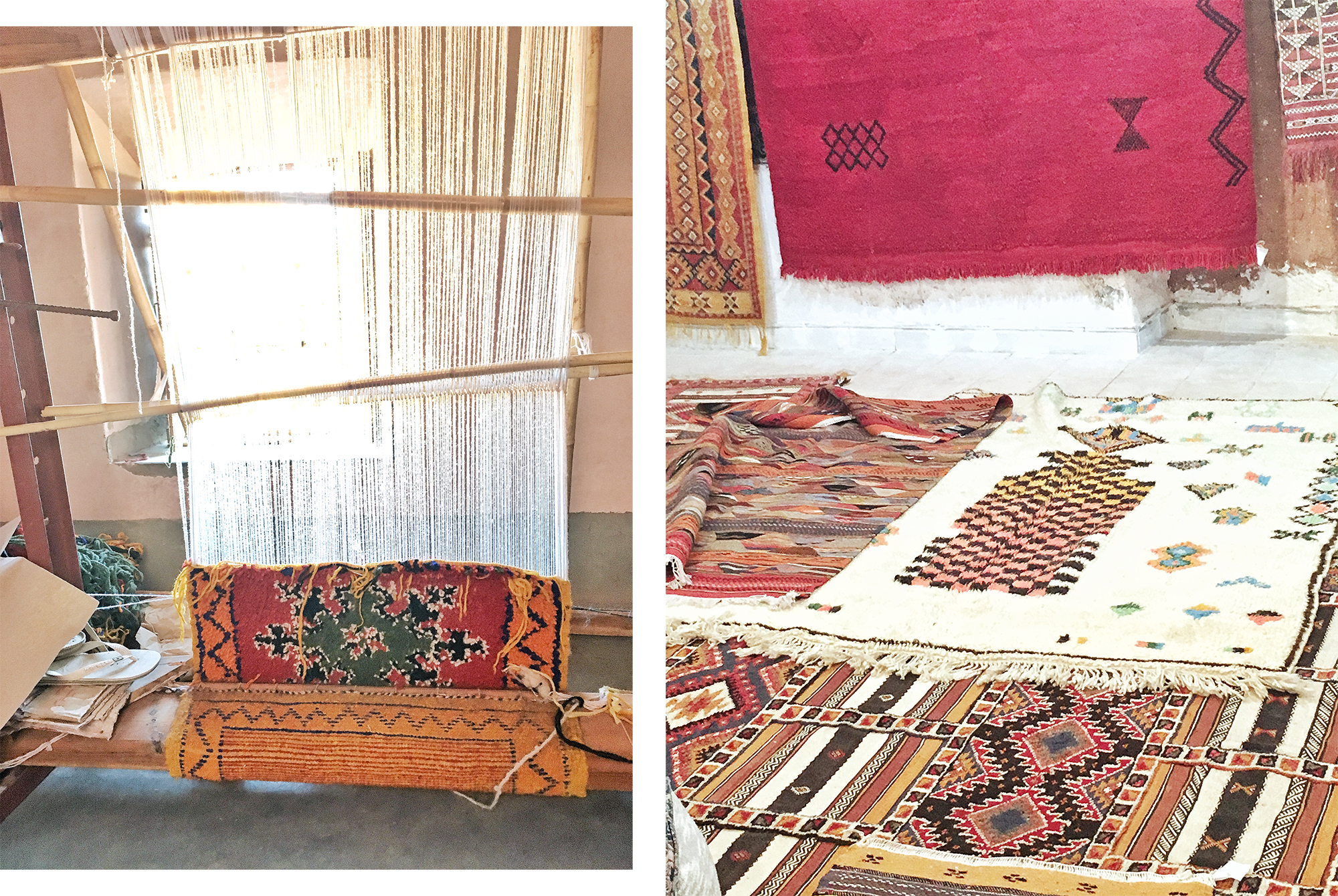
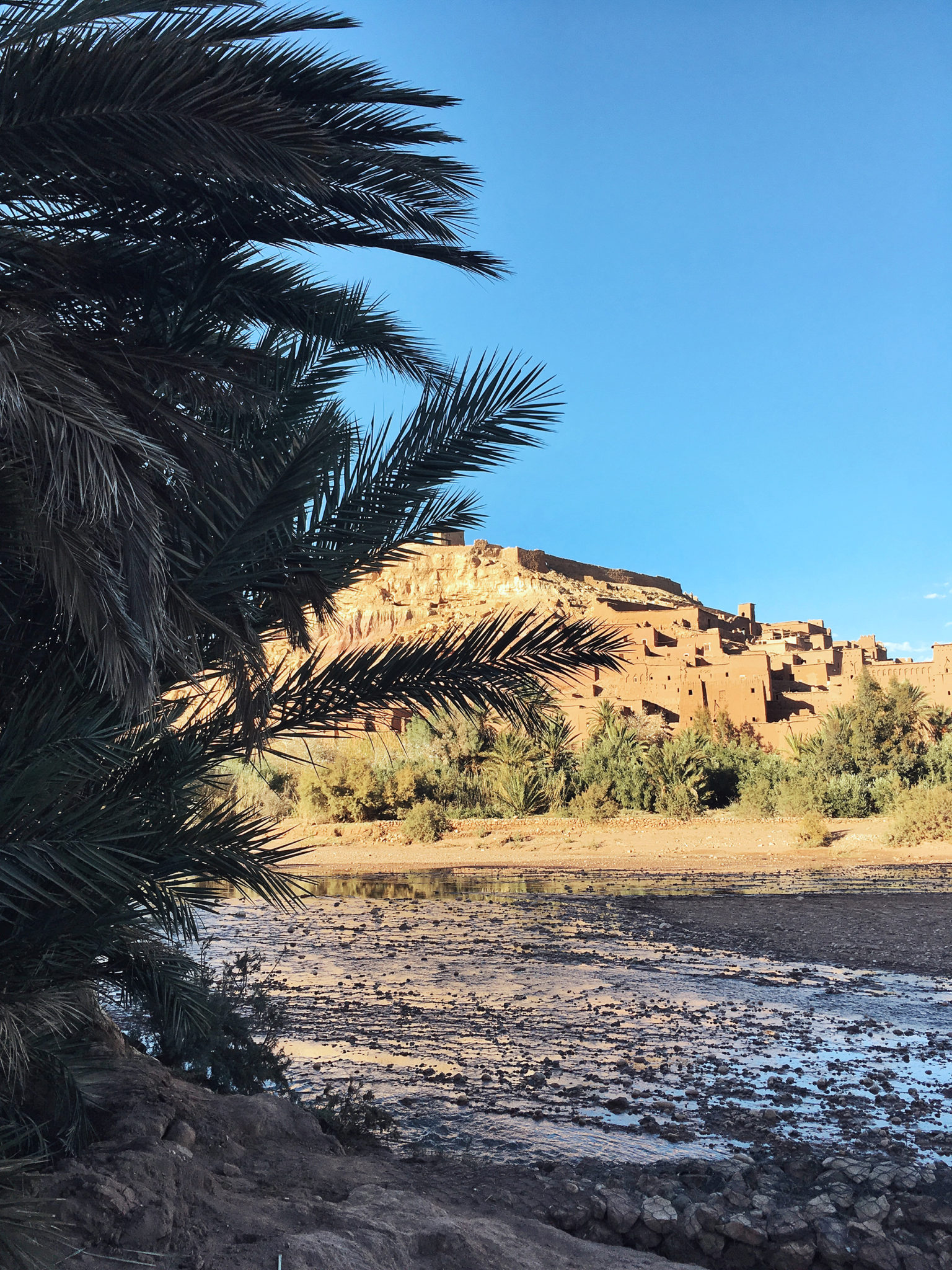
If you’re planning to spend the night under the stars at a luxury camp in the Sahara Desert (and I highly recommend that you do) then you MUST visit this historic, UNESCO heritage site.
Trying to figure out how to fit it into your jam-packed schedule? Check out this itinerary.
Keep your stalking game strong and follow me @teriaki if you aren’t already!




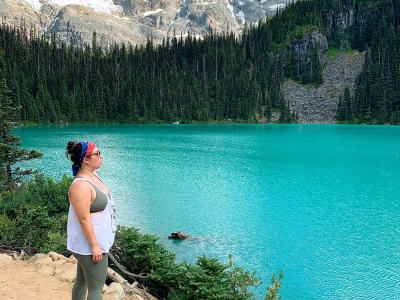

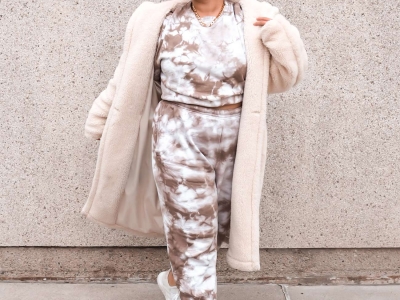

0 Comments